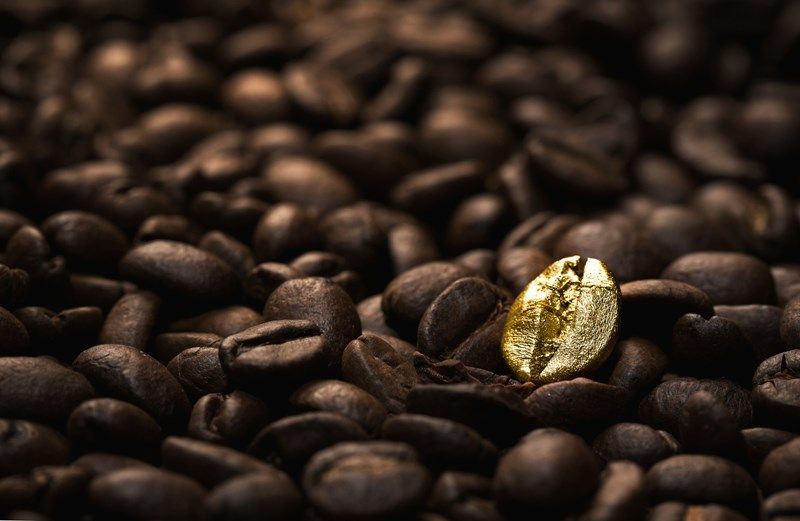6 ways coffee brands can differentiate with packaging design
Innovation
February 14, 2018Reading time: 2 minutes
With coffee’s global appeal making the market highly competitive, we explore the different design tactics used to help products stand out from the crowd and catch consumers’ attention on the supermarket shelf.
With coffee’s global appeal making the market highly competitive, we explore the different design tactics used to help products stand out from the crowd and catch consumers’ attention on the supermarket shelf.

As the coffee industry continues to boom, the number of roasters and cafes multiplies and the marketplace becomes more crowded. In such a busy environment, it’s clear that brands must find a way to distinguish themselves from competitors and embrace what makes them unique. In light of this, we’ve taken inspiration from coffee brands finding clever ways to differentiate.
1. KEEP IT SIMPLE
rawing attention to yourself doesn’t have to mean kitsch patterns and loud fonts. While some roasters rely on a varied colour palette to stand out, others opt for a simple colour scheme and sophisticated design. Kin-Kin Coffee uses two-tone squares for a clean and simple effect that looks great on Instagram. The Coffee Collective showcases its coffee in stark white bags with a simple geometric pattern. Five Elephant Coffee Roastery follows suit, opting for a white bag and pastel shades to distinguish each of its products. The lesson? Embrace simplicity wherever you can.

2. OPT FOR BOLD COLOURS
Subtle colour schemes are just one element of simple design; brighter tones can also be simple and can make a strong statement on supermarket shelves. Brands like Has Bean Coffee catch the consumer’s attention with bright reds and simple lettering, Caffènation takes inspiration from a palette of bold hues, while Azahar makes its mark with a lively shade of yellow.

3. BE INSPIRED BY RETRO TRENDS
While minimalist modern design grows in popularity, traditional trends are also making a reappearance. Retro fonts help distinguish coffee bags produced by Verve Coffee Roasters, while a throwback colour palette leaves a lasting impression for Moder Times Coffee and Temperato. Vispera boxes also take inspiration from past decades, featuring colours and patterns that hark back to design trends of the ’60s and ’70s.

4. SIMPLIFY THE PREPARATION PROCESS
Making consumers’ lives easier is another way of growing market share. Raw Bean Coffee streamlines the brewing process by offering grounds in a pyramid sachet designed to steep like tea; the simple sachets reduce mess and are easily transportable. Lyons also delivers fresh ground coffee in a bag, using a cylindrical sachet design for brewing.
5. HARNESS THE POTENTIAL OF TECHNOLOGY
With consumers demanding greater transparency from brands around ingredients and provenance, technology can be used to make life easier for both the brand and consumer. Scannable codes on coffee bags, like those from Ethical Bean, trace beans back to the farms where they were grown and provide the consumer with information about the producer. Innovations like Amcor’s MaXQ digital packaging system provide brands with a range of technological tools to gather strategic insight, operate loyalty programmes and build relationships with consumers through personalised, targeted, two-way conversations.
6. CONSIDER ALTERNATIVE PRINTING METHODS
Rhetoric Coffee opts for screen-printing to give their bags a unique look and texture; artwork created by local artists is sized to the bag’s dimensions and screen-printed directly onto it. Similarly, Talor&Jørgen worked with a local illustrator to bring coffee scenes and stories to life on their vibrant packaging. For a craft look and feel, check out AmPaper, a specific tactile coating added to the packaging’s surface to imitate the texture of paper.
